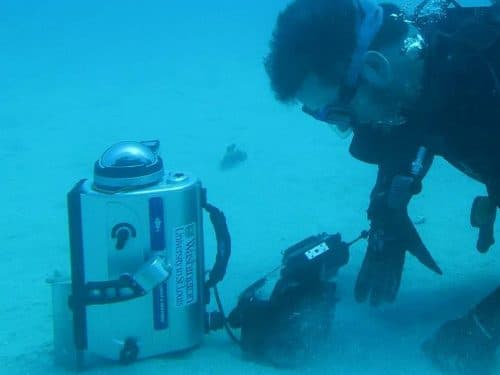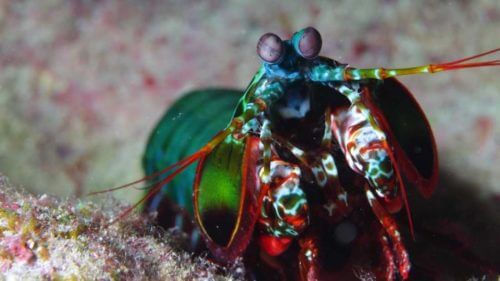This is a camera that detects polarization patterns of light waves. The camera can detect the polarization patterns of the light, which change as the light waves enter the water, and see how they deviate from the direction of entry or scatter. Now it turns out that these light polarization patterns underwater can also be used to deduce the position of the sun, and by means of it to calculate the position of the camera itself.
By Yael Halfman Cohen
The mantis jellyfish is a relatively large jellyfish that lives on the bottom of the sea in the tropics. In the past, we already wrote about the force of the blow of his clamps, which can break the glass of the aquarium, and on strong materials developed inspired by them. We also reported on the ability of the Mantis Mantis to detect polarized light, which allows it to locate its prey in the water efficiently and quickly. Inspired by this ability, a camera was developed, one of its uses is Diagnosis of cancerous tumors. In the attached video you can see the essence of the inspiring features of the Hasilon.
A study was recently published about another biomimetic development inspired by the miraculous vision abilities of the Mantis mantis; This time it is about an underwater GPS with underwater detection and tracking capabilities.
The research is based on the initial camera developed several years ago by researchers from the USA and Australia. This is a camera that detects polarization patterns of light waves. The camera can detect the polarization patterns of the light, which change as the light waves enter the water, and see how they deviate from the direction of entry or scatter. Now it turns out that these light polarization patterns underwater can also be used to deduce the position of the sun, and by means of it to calculate the position of the camera itself.
Other GPS technologies are based on radio waves received from satellites. But radio waves do not travel well through marine media. With the new GPS technology, which is based on measuring the polarization of light from many angles, the sensors can be used even at a depth of fifty meters.

The discovery began when during dives made as part of field tests of the developed camera it was discovered that the polarization patterns changed depending on the time of day and the viewing direction. Following this discovery, a number of additional experiments were carried out in different parts of the world, at different depths and in changing weather conditions. The findings showed that indeed the polarization patterns change depending on the position of the sun. The researchers assumed that underwater navigation exists among marine animals even when they cannot see the sky, this is because of their ability to distinguish polarization.
At this point the error range of the GPS is still large. The researchers hope to improve the GPS's performance with more accurate instrumentation and processing algorithms.
In the future, the technology can be integrated into underwater robots for civilian and military uses. Imagine a swarm of GoPro cameras, which can discover new species and locate parts of ships. The future starts there.

More of the topic in Hayadan:
